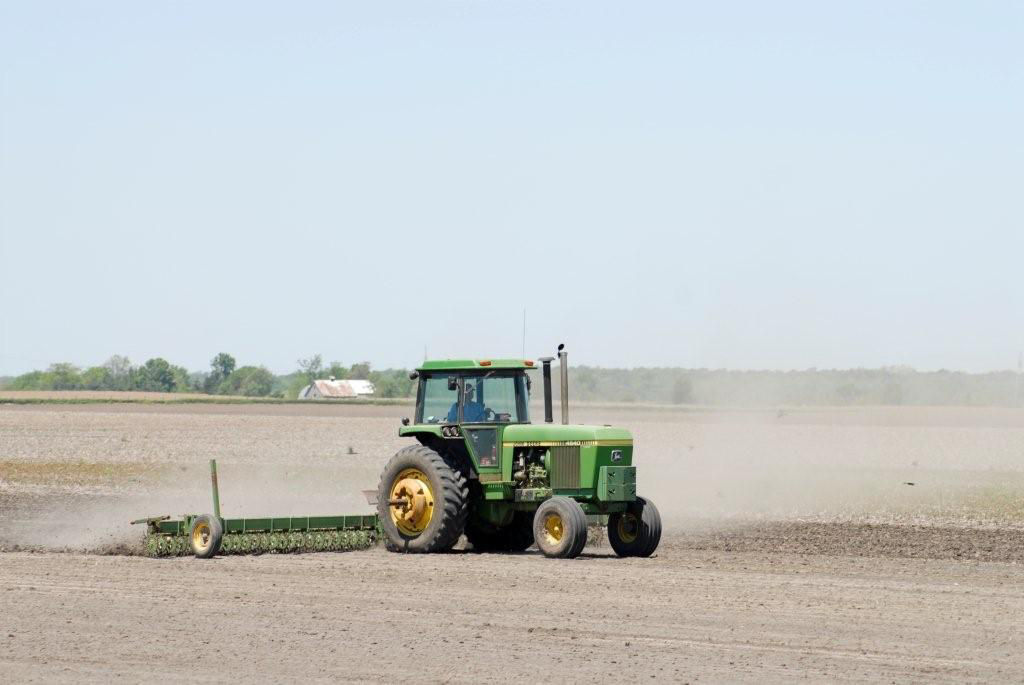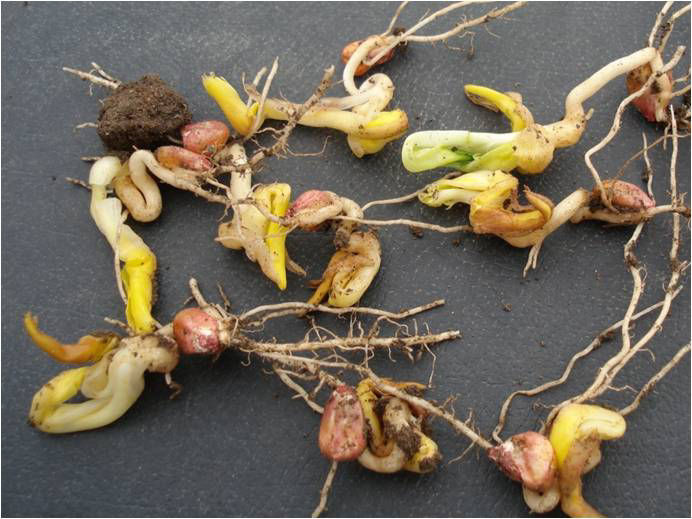7 MIN READ
Why Is My Corn Leafing Out Below Ground?
June 27, 2023
- Occasionally, when checking corn seedling emergence, a seedling is found that has “leafed out” underground and never broke through the soil surface. This is usually the result of any factor that inhibits normal mesocotyl elongation.
- The mesocotyl is the part of the seedling between the seed and the coleoptile. It serves as the “lift” that pushes the coleoptile to the surface as well as a pipeline for nutrients from the seed to the developing plant, until the nodal roots begin to provide the necessary nutrients.
- The mesocotyl growth and elongation can be impacted by several factors including: soil crusting and compaction; imbibitional chilling; exposure to acetanilide herbicides in conjunction with cold and wet soil conditions; cold shock; kernel position in the soil; soil planting conditions that allow the coleoptile to be exposed to light prior the soil surface, deep planting, or any combination of these factors.
Can soil compaction/crusting cause the seedling to leaf out underground?
Yes and this is often the major reason that the seedling is leafing out underground. Soil compaction caused by planting in wet soil conditions can lead to sidewall compaction or surface crusting. This is particularly true with heavier texture soils with low organic matter. A hard driving rain after planting is also a major causes of soil crusting (Figure 1).

In some cases, as illustrated in Figure 2 soil crusting that occurs while the seedling is spiking, can cause the emerging leaves to be trapped.

I have had trouble in the past with soil crusting, what can I do to help prevent it, and if it does happen what I can I do help reduce the impact on my corn stand?
Soil crusting can be categorized into three types, chemical, biological and physical. Physical crusts are the most common found in the Corn Belt in the spring. Most of the physical crusts are caused by a structural degradation of the soil aggregates as a result of the force of rain or irrigation droplets associated with high intensity storms. Soils that have a wide range of particle sizes and are weakly aggregated have many soil pores, the force of the rain drop causes the pores to be filled with finer particles. Upon drying, a layer of crust is formed, reducing water infiltration, gas exchange, and the seedling will, in some cases not be able to break through1.
The potential for soil crusting can be reduced by protecting the soil surface as much as possible from the force of the rain drops by using no-till cropping system and allowing some crop residue to cover the row surface, increase the organic matter in the soil through adding manure or planting a cover crop. Limiting tillage to minimum needed to prepare the basic seedbed prior to planting. Planting when conditions are most favorable for emergence shortens the amount of time to emergence, narrowing the window for a crust to form.
Breaking the crust on an existing field is best achieved with a rotary hoe (Figure 3). While newer models of rotary hoe are self-cleaning and can handle some crop residue, older models may not be able to be used in reduced tillage systems. Additionally, reduce the weight of the tractor as much as possible and use the smallest tractor that can handle the equipment will help reduce soil compaction.

Could my herbicide program cause the plant to leaf out under ground?
Under cool and wet conditions that slow the emergence process and metabolism within the corn seedling, injury by some chloroacetamide herbicides can result causing leafing underground2.
It was extremely cold right after I planted, is this the result of cold shock?
Possibly. While not completely understood cold soils or wide fluctuations in soil temperatures during the emergence process have been thought to cause the “corkscrewing” of the mesocotyl (Figure 4 and 5.) The underlying theory of how cold temperatures injure the mesocotyl is that the cold temperatures unevenly damages the cells around the mesocotyl and the cells on the uninjured side continue to grow and multiply at usual high rate. Thus, as those cells continue to grow and the cells on the other side do not, it twists the mesocotyl into the corkscrew shape. The exact temperature needed cause this effect is unknown at that this time3.


What is imbibitional chilling and could it have caused this phenomenon?
While this may have caused the seedling to leaf out underground, a more common result of imbibitional chilling is death of the seed. When the seed is placed in the soil, it imbibes (takes in) water about equal to about twice the weight of the seed in the first 24 to 36 hours after planting. If the water is extremely cold, it can result in death of the embryo. The seed will simply swell, or the radicle may just start to emerge and germination will simply stop3.
Does kernel position in the row really result in leafing out under ground?
While kernel position may influence the shape of the mesocotyl, it is doubtful that kernel position within the soil will result in leafing out underground. Keep in mind the germination process for corn, the coleoptile emerges from the embryo side of the kernel. If that side is placed down in the soil, the coleoptile emerges underneath the kernel and must elongate horizontally until the mesocotyl passes the end of the kernel and then it will bend upward. This may result in a somewhat bent but not corkscrewed mesocotyl4.
How does exposure to light cause corkscrewing of the mesocotyl?
When the coleoptile reaches the surface and is exposed to red-wave length light, it results in growth hormones being released that causes the mesocotyl to stop elongating. The coleoptile sheath splits and the leaves expand and emergence from the soil is complete. However, if the coleoptile is exposed to light at deeper soil depths because poor seedbeds (clods, dry) or seeding conditions (wet soils and failure to collapse the seed furrow) it may result in leafing out underground3.
Sources
1Duiker, S.W. 2017. Soil Crusting. Pennsylvania State University Extension. https://extension.psu.edu/soil-crusting
2Bradley, K. 2009. Cool, Wet Soils Can result in More Corn Injury from Preemergence Residual Herbicides. University of Missouri Extension. https://ipm.missouri.edu/IPCM/2009/4/Cool-Wet-Soils-Can-result-in-More-Corn-Injury-from-Preemergence-Residual-Herbicides/
3Nielsen, R.L. 2019. Emergence Failure in Corn. Purdue University Extension. https://www.agry.purdue.edu/ext/corn/news/timeless/EmergenceFailure.html
4Nielsen, R.L. 2019. Visual Indicators of Germination in Corn. Purdue University Extension. https://www.agry.purdue.edu/ext/corn/news/timeless/GerminationEvents.html
1222_66756
Seed Brands & Traits
Crop Protection
Disclaimer
Always read and follow pesticide label directions, insect resistance management requirements (where applicable), and grain marketing and all other stewardship practices.
©2024 Bayer Group. All rights reserved.